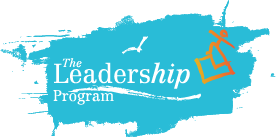Early one morning in a packed New York City subway car I had a failed attempt at a difficult conversation. That morning the train was especially crowded. I was standing in the middle of the subway car with one arm up on the bar and was being jostled about as the train navigated the century-old tracks. The person sitting directly in front of me had crossed their legs so that one foot was sticking out into the packed crowd. Their shoe, which had until then been walking around on New York City streets, was now about a quarter of an inch away from my pleated slacks.
“Excuse me,” I began. “Your foot is sticking out. Please move it”.
“No”
“No?”
“No.”
“You’re rude!”
“You’re rude!”
Mission not accomplished.
When I arrived at our office I spoke to a colleague of mine about it and he suggested that if this situation came up again, and it felt safe to do so, I might try the following:
- Lean down if possible so you are not towering over the person and soften your expression.
- Consider that they may have gotten on the train earlier when the train was empty and have been so engrossed in their book that they didn’t realize they were sticking their foot at other passengers.
- Show some humility and grace. Be kind.
- Here’s a sample sentence, “Hi. Excuse me. I don’t mean to interrupt. The train is pretty packed and it is hard for me to stand. Would you mind please just positioning your shoe so that I can move my legs a little more?”
I have taken his advice and it has worked every time (yes, this happens a lot on the train). People want to be treated with respect, even the ones who are being disrespectful. If I approach a difficult conversation with humility I am much more likely to get the results I seek.
Another colleague of mine, Erika Petrelli, showed me a wheel she created years ago that helps to guide people through difficult conversations. I apply the wisdom I learned from my adventures on the NYC subways with Erika’s Difficult Conversations Wheel and have seen my success rate go through the roof when having difficult conversations at work. Here are the 10 guiding questions from her wheel:
- Why do I need to have this conversation? What are the facts?
- What assumptions do I have?
- How have I contributed to this situation?
- What outcome am I hoping for? What is the goal?
- When and where will I have this conversation?
- How might the person react? How will I respond?
- What blocks me? What do I need to watch out for in myself?
- What else do I need to prepare for this conversation? Whose input do I need?
- How would I want to be treated if someone were having this conversation with me?
- If it doesn’t work what next?
When I prepare for any difficult conversation by first asking myself those ten questions I almost always get the results I am hoping for. In the vast majority of the cases the conversation ends with smiles and the relationships become stronger than they were before the issue arose.
By preparing beforehand you are showing the person tremendous respect. This alone goes a long way in having conversations that get you the results you need.
**
For more conversations on leadership, please join us for one of our upcoming free virtual webinars! You can find the menu and register here: https://www.tlpnyc.com/free-workshops




Comments [0]
Click here to read/write comments